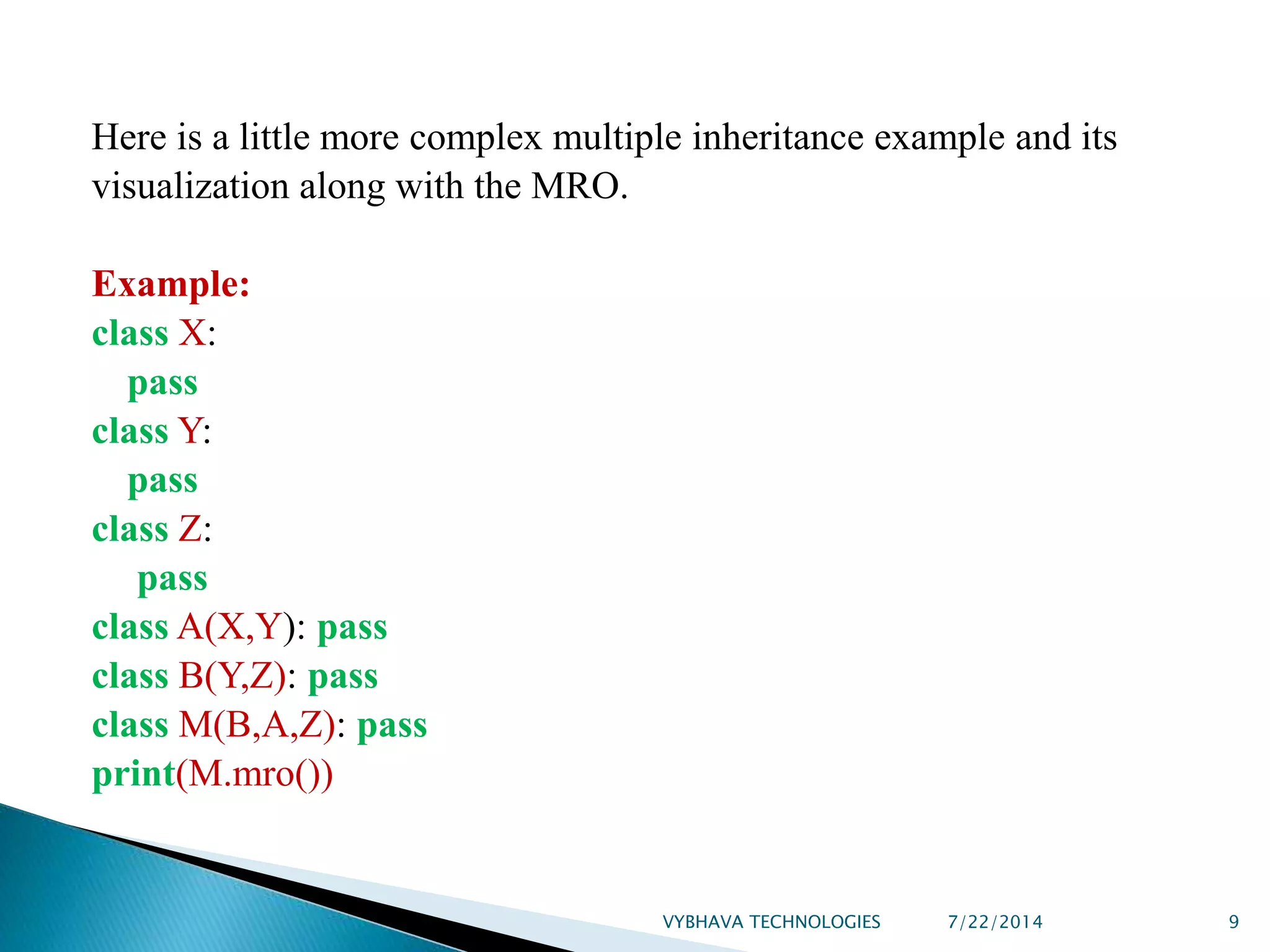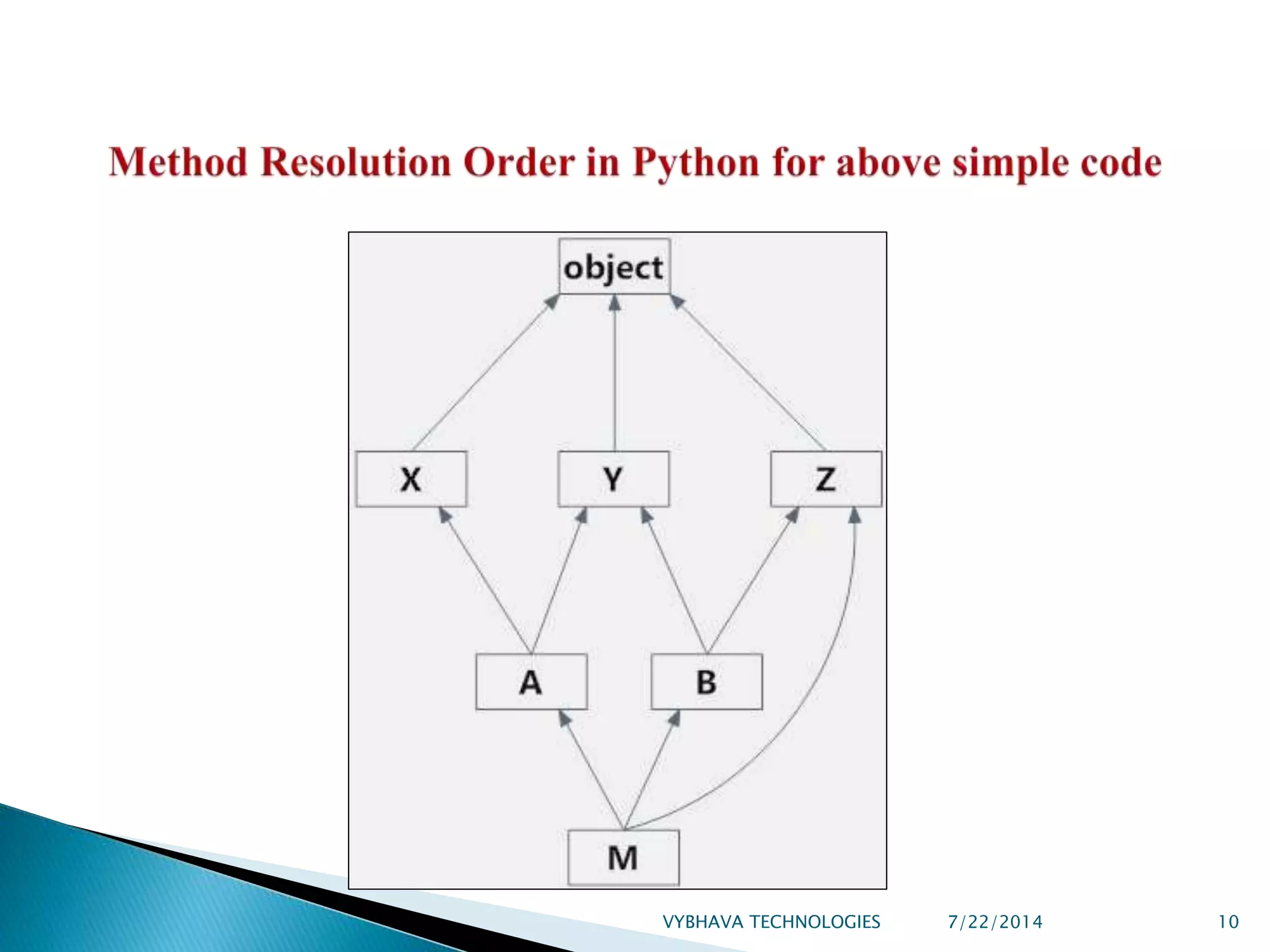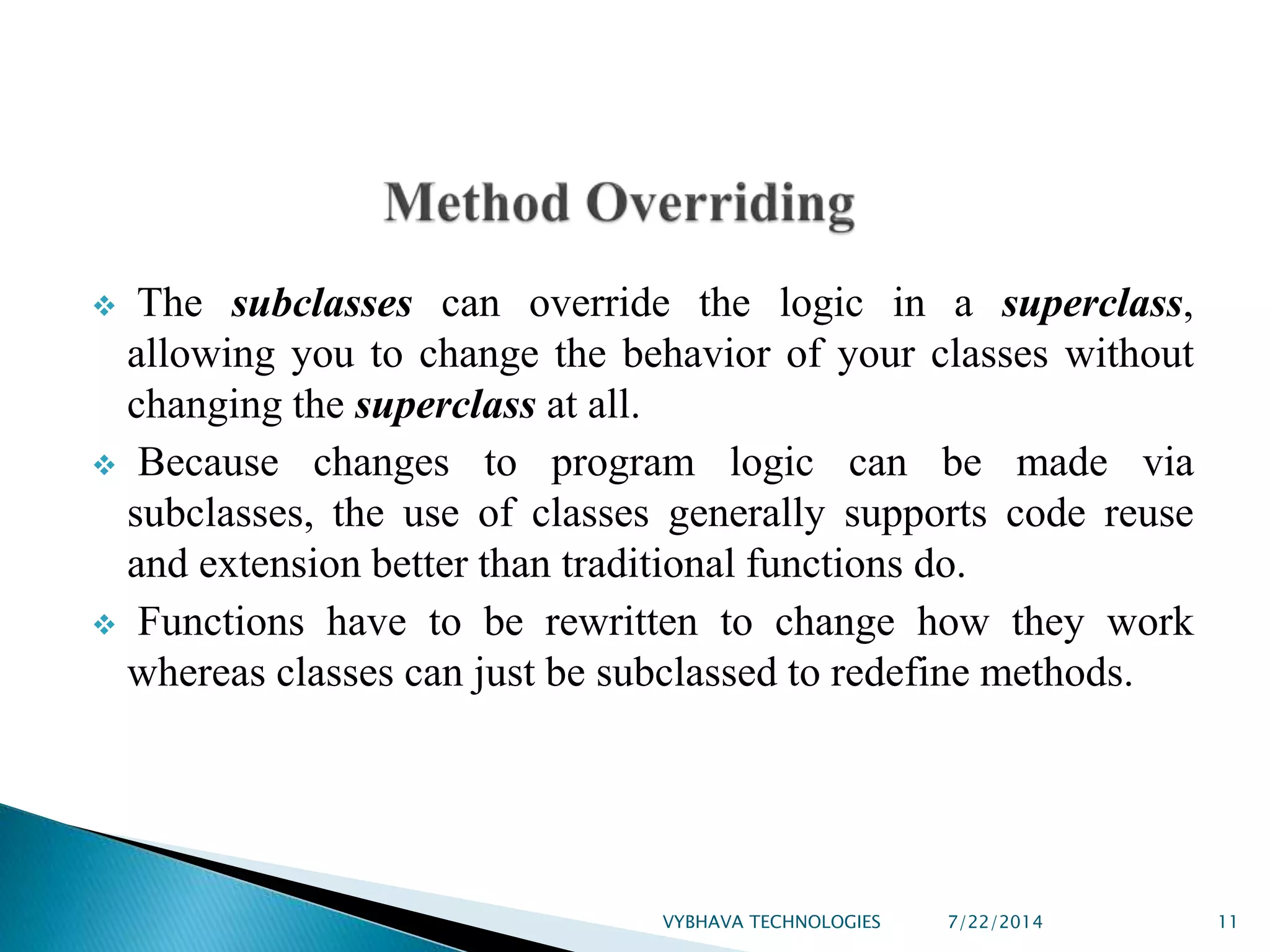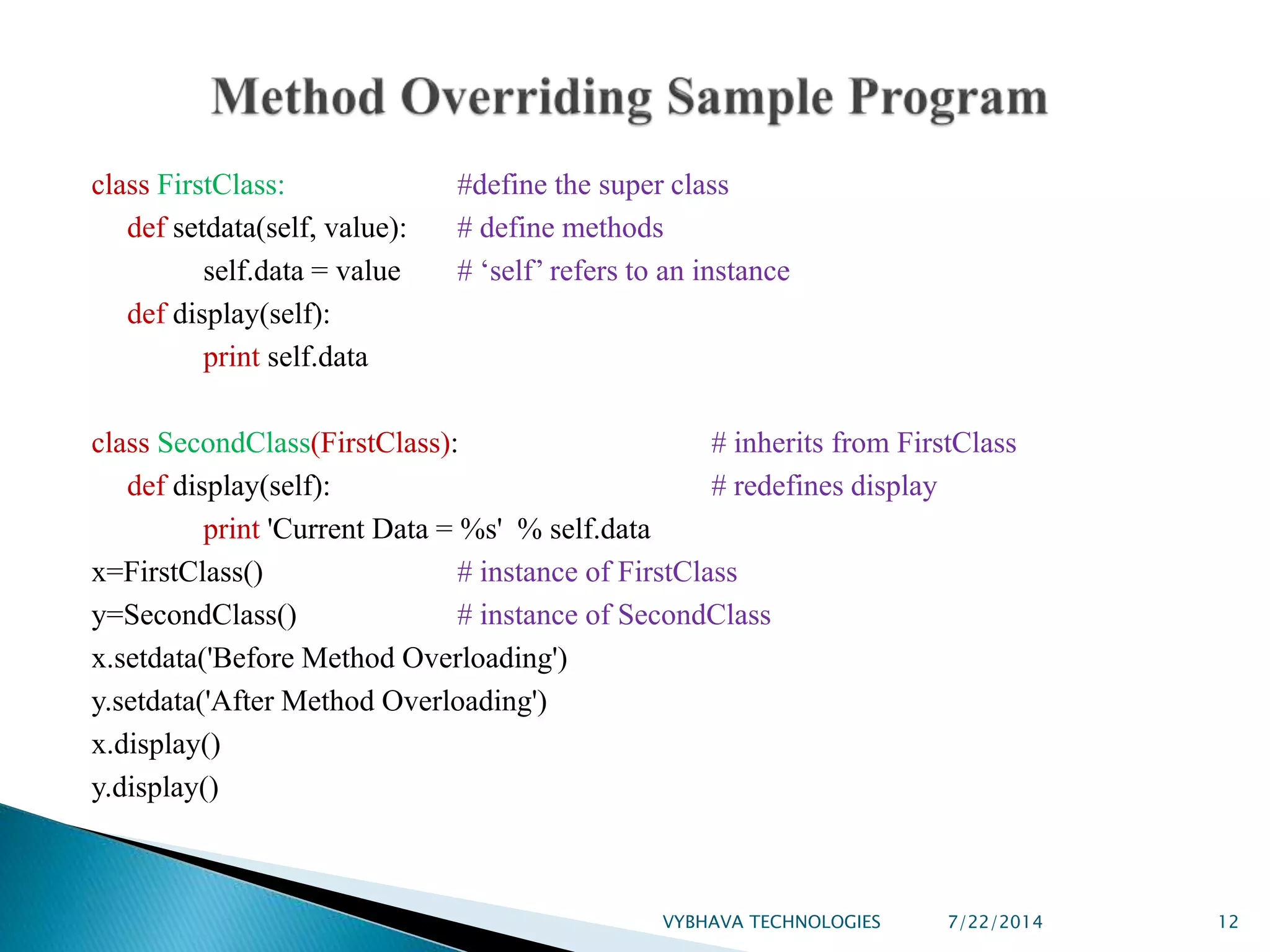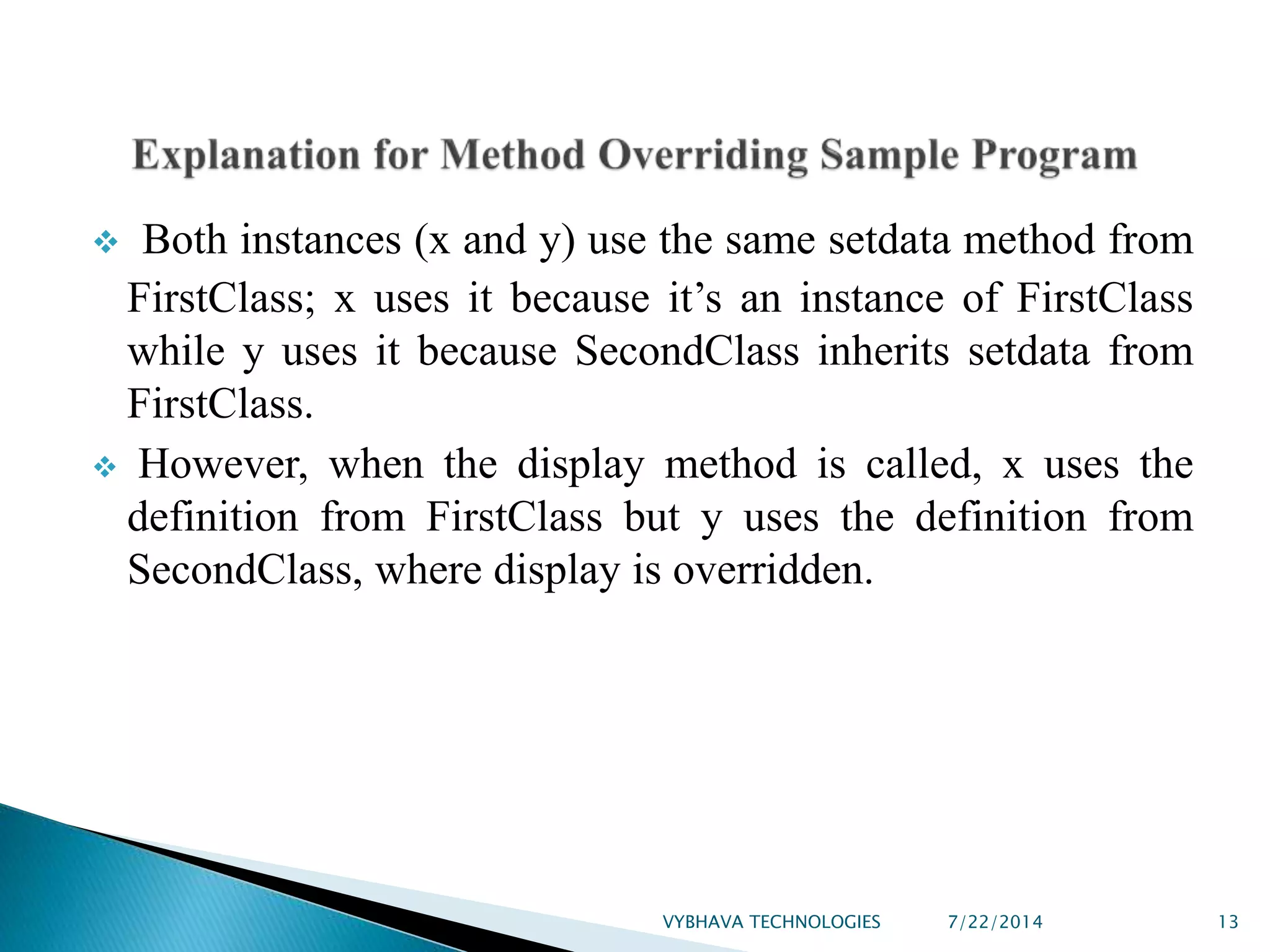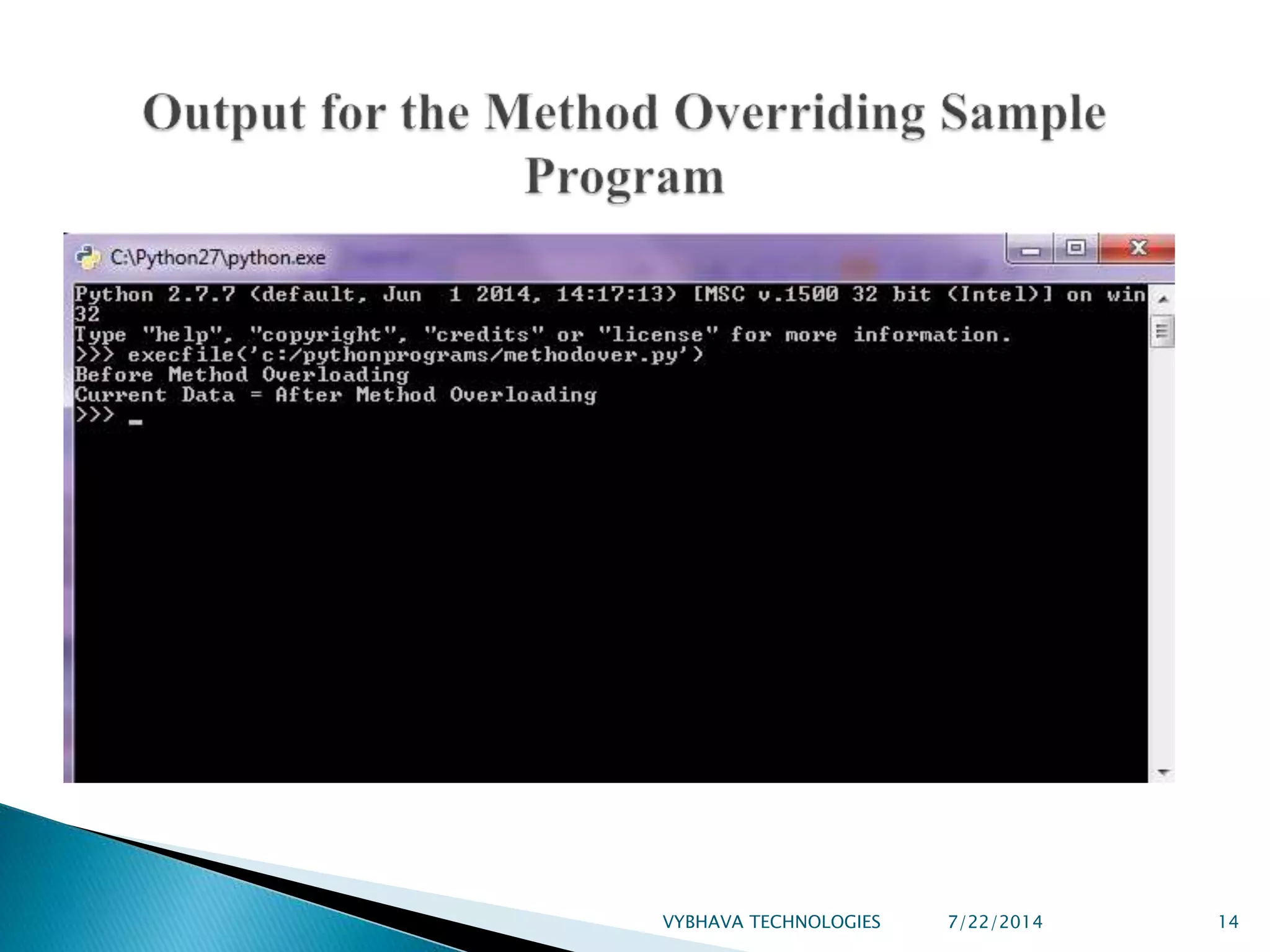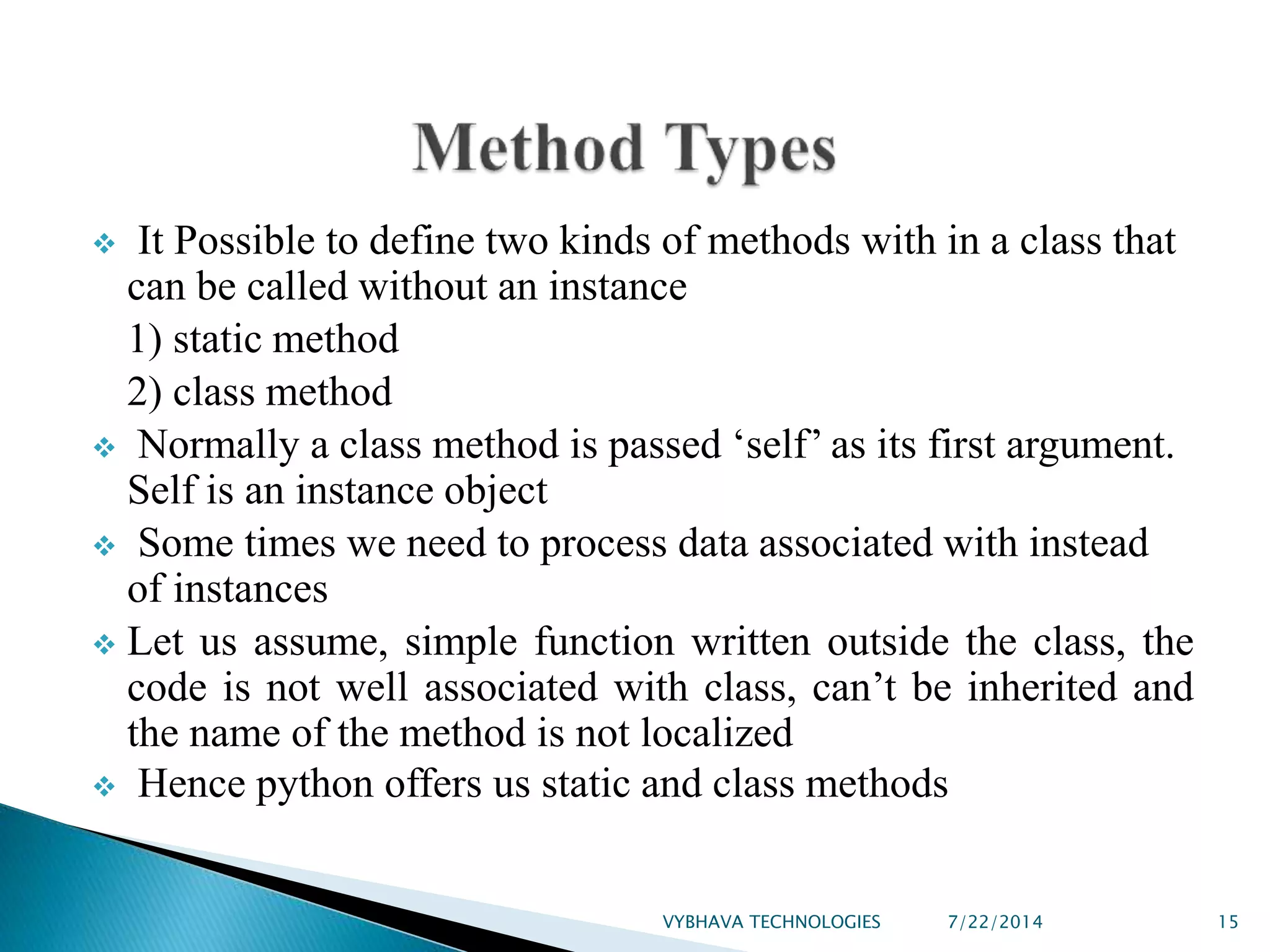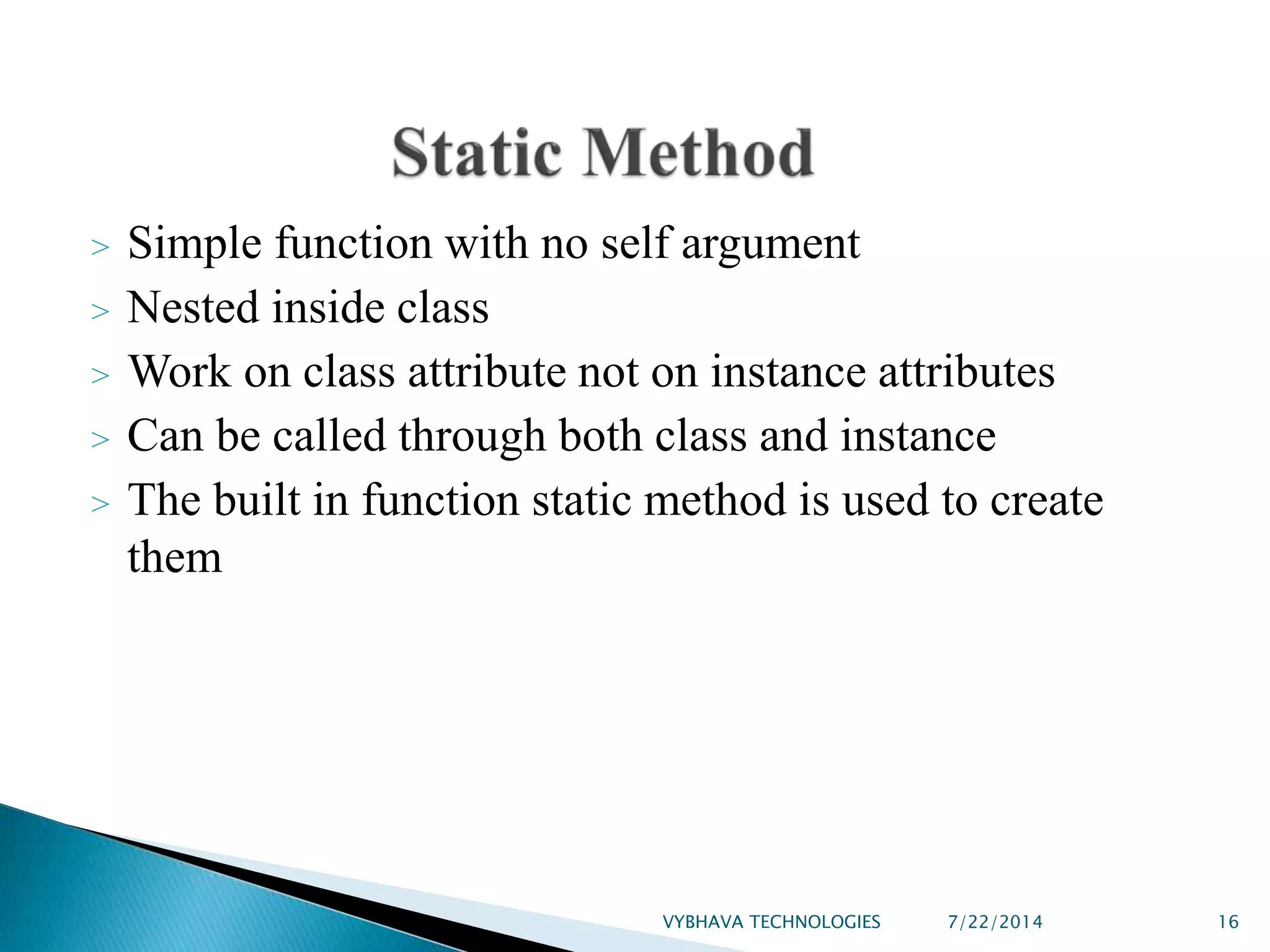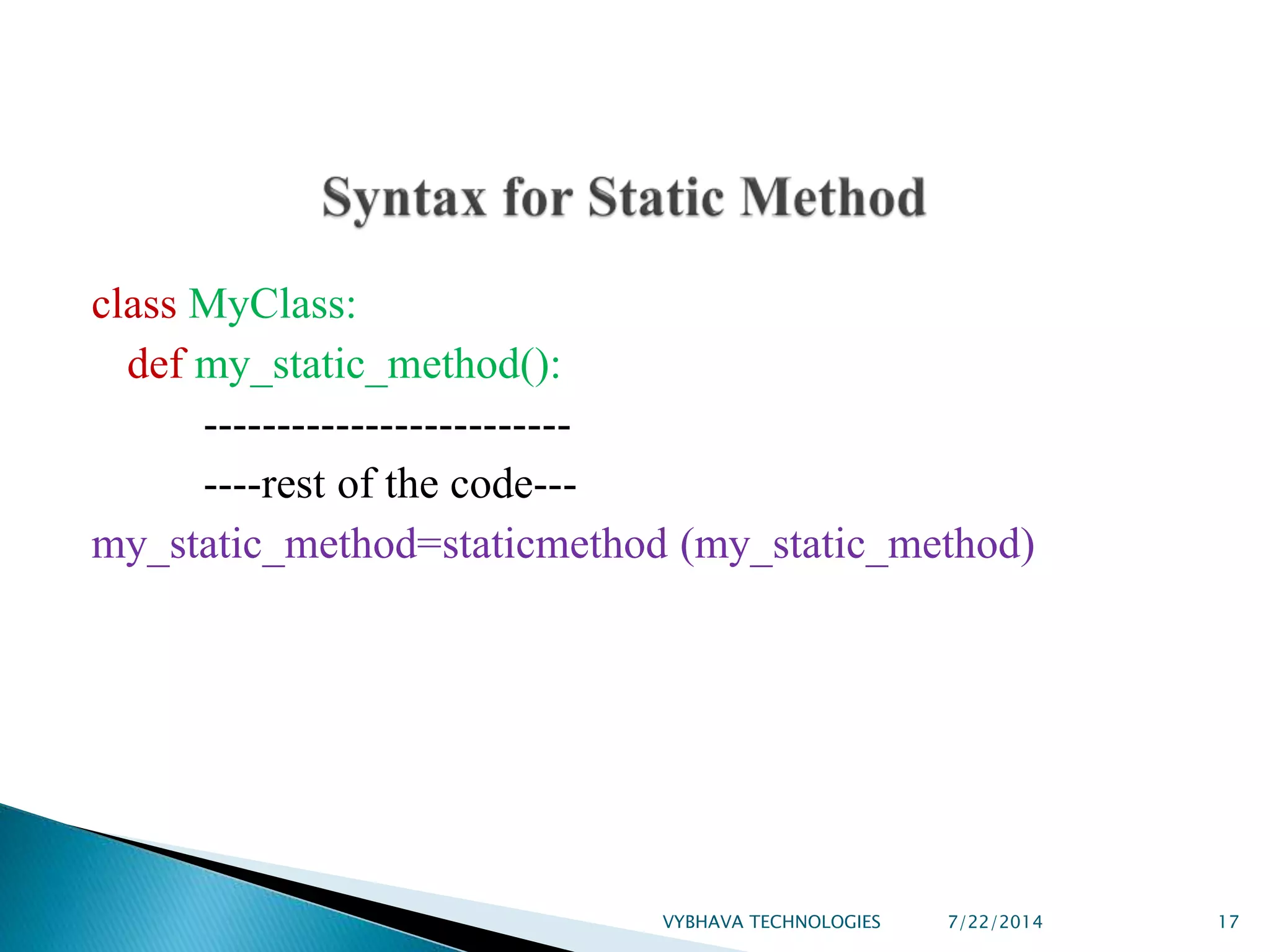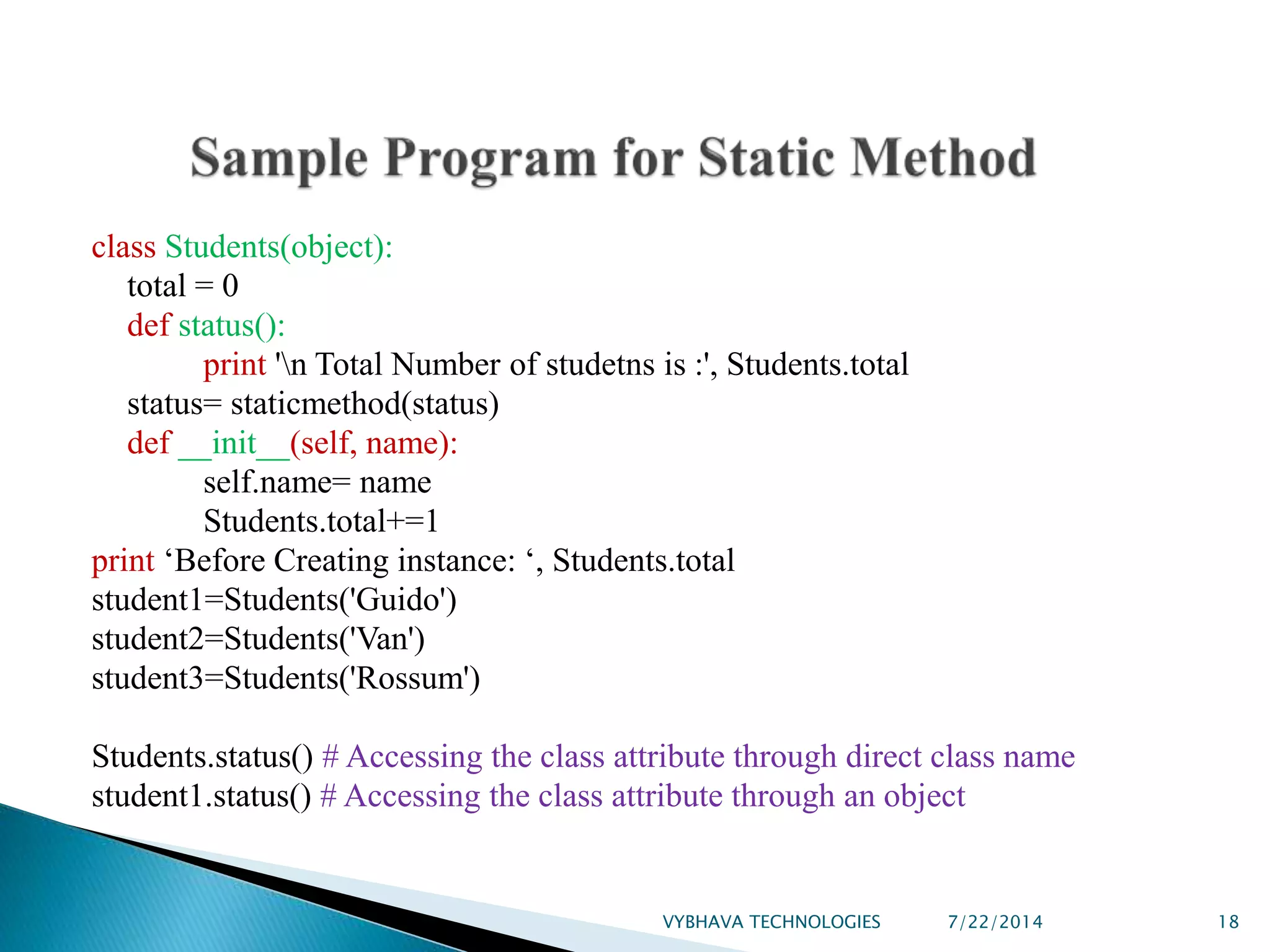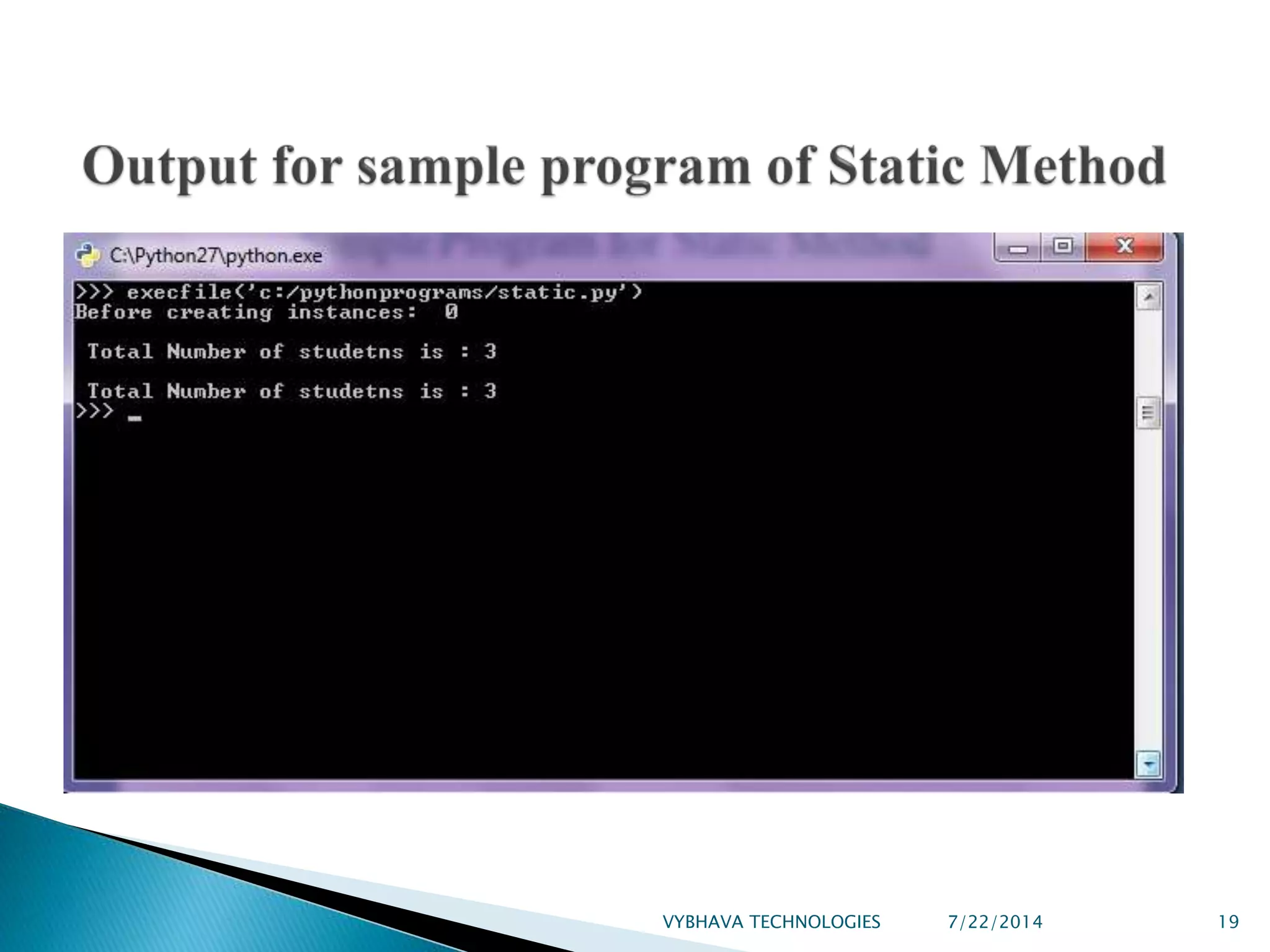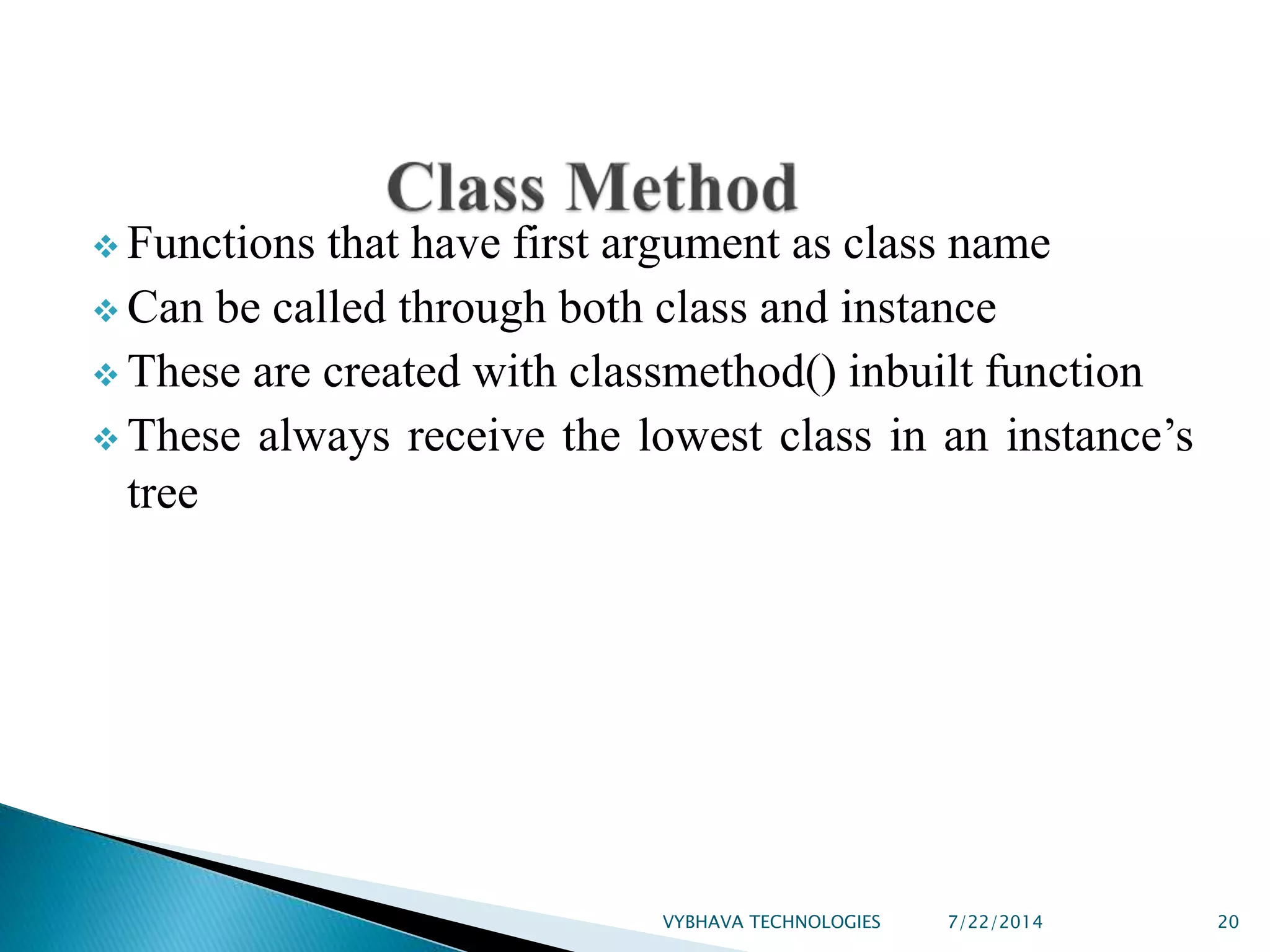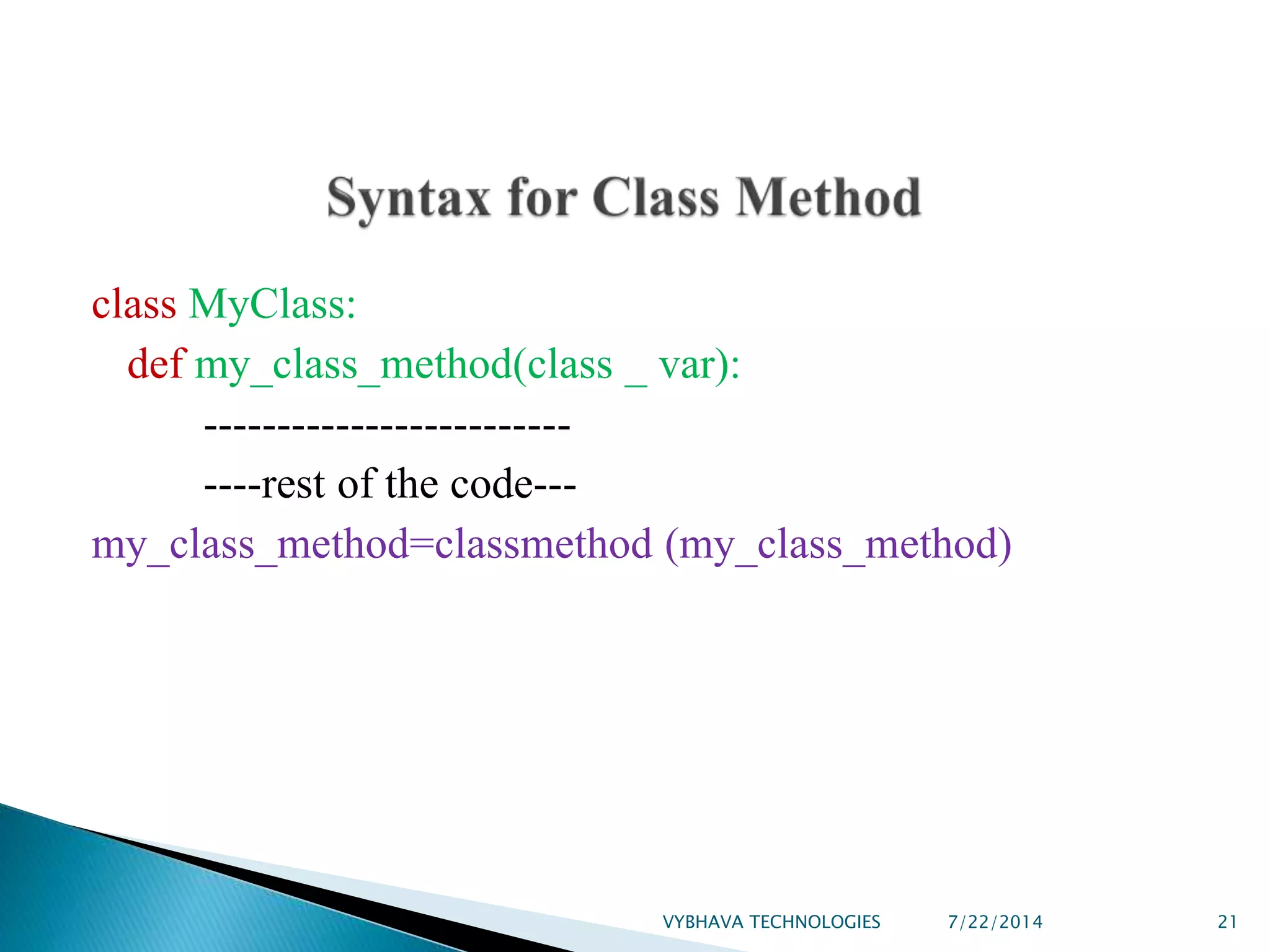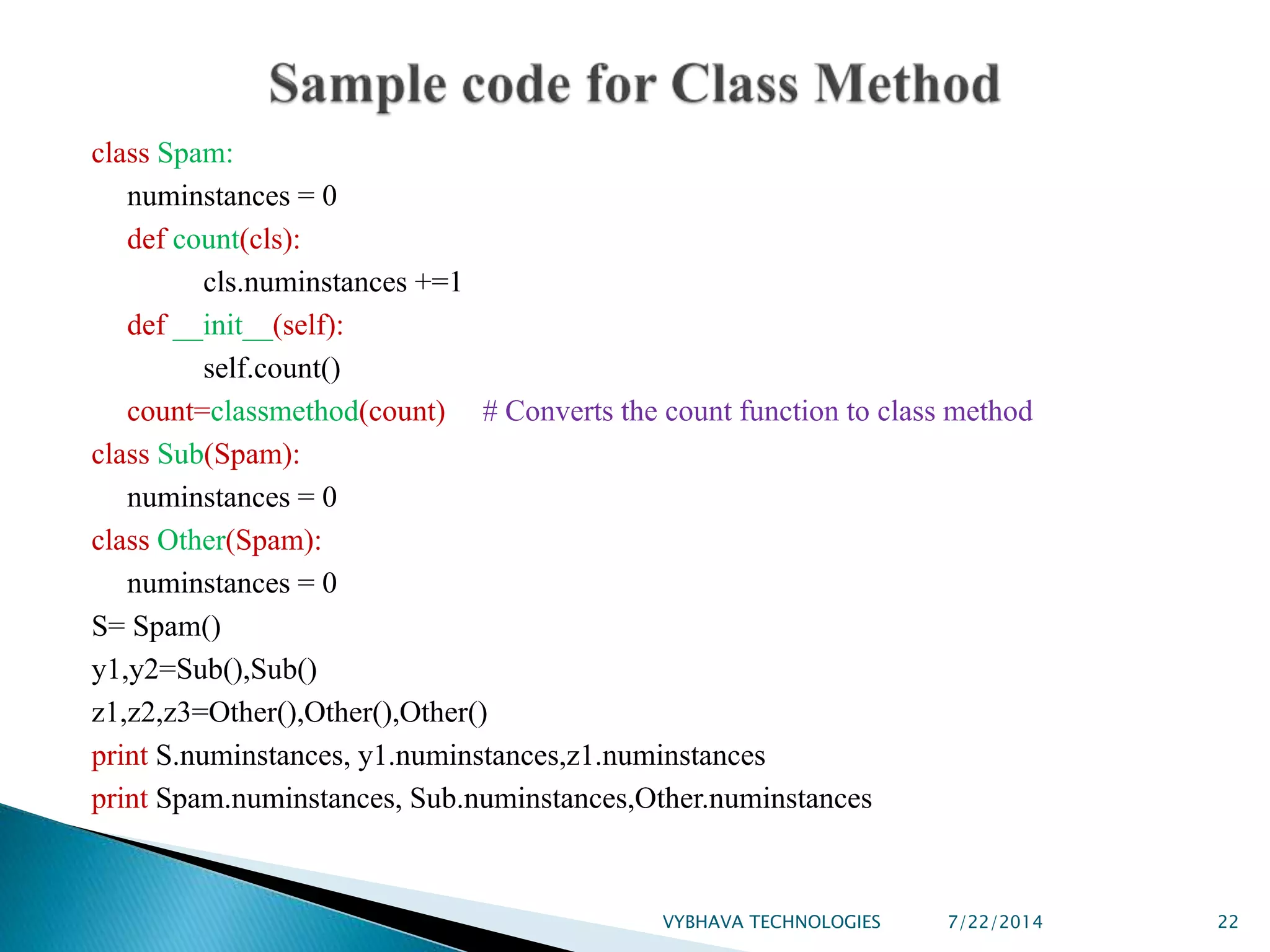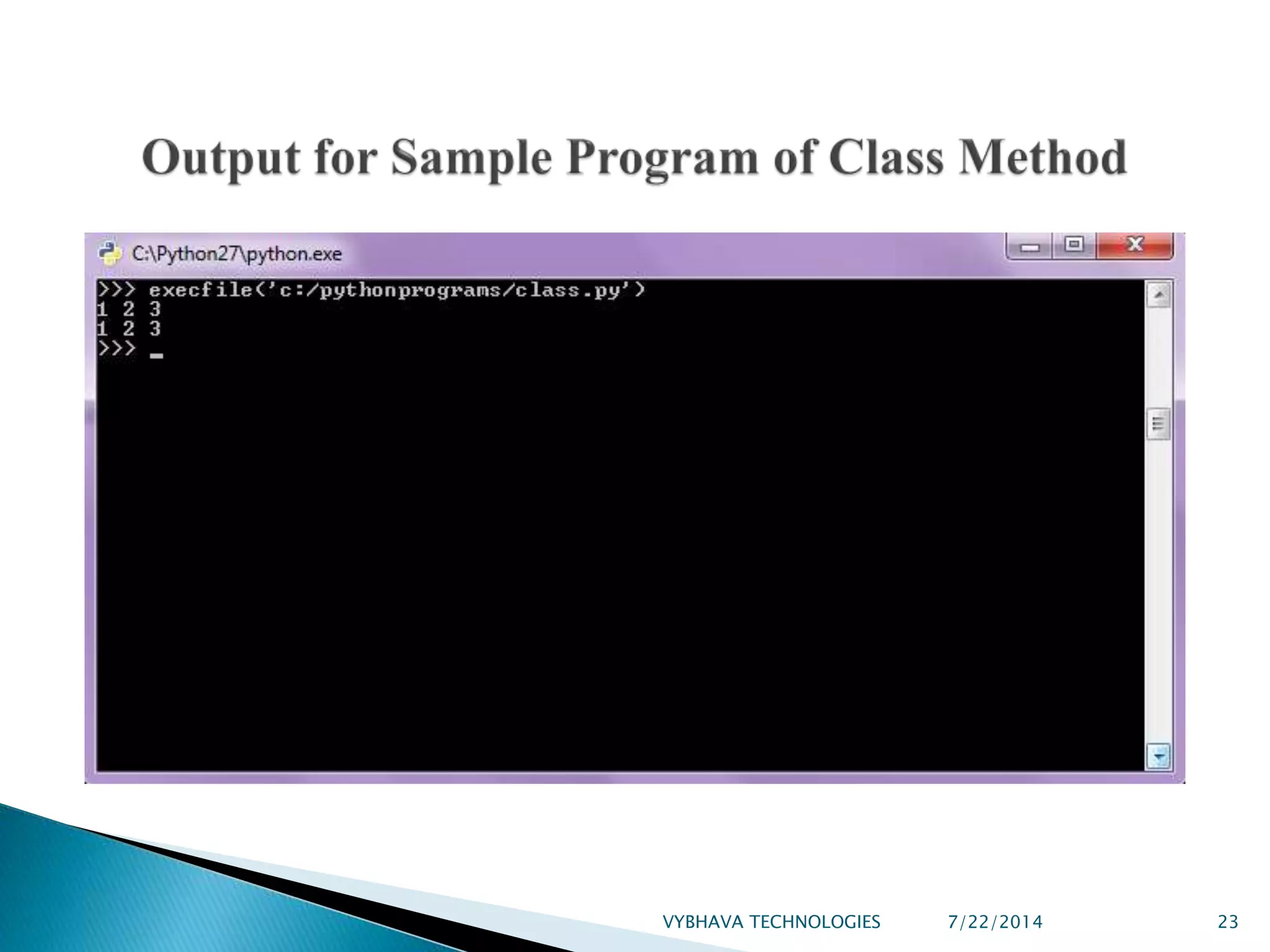This document discusses object-oriented programming concepts in Python including multiple inheritance, method resolution order, method overriding, and static and class methods. It provides examples of multiple inheritance where a class inherits from more than one parent class. It also explains method resolution order which determines the search order for methods and attributes in cases of multiple inheritance. The document demonstrates method overriding where a subclass redefines a method from its parent class. It describes static and class methods in Python, noting how static methods work on class data instead of instance data and can be called through both the class and instances, while class methods always receive the class as the first argument.
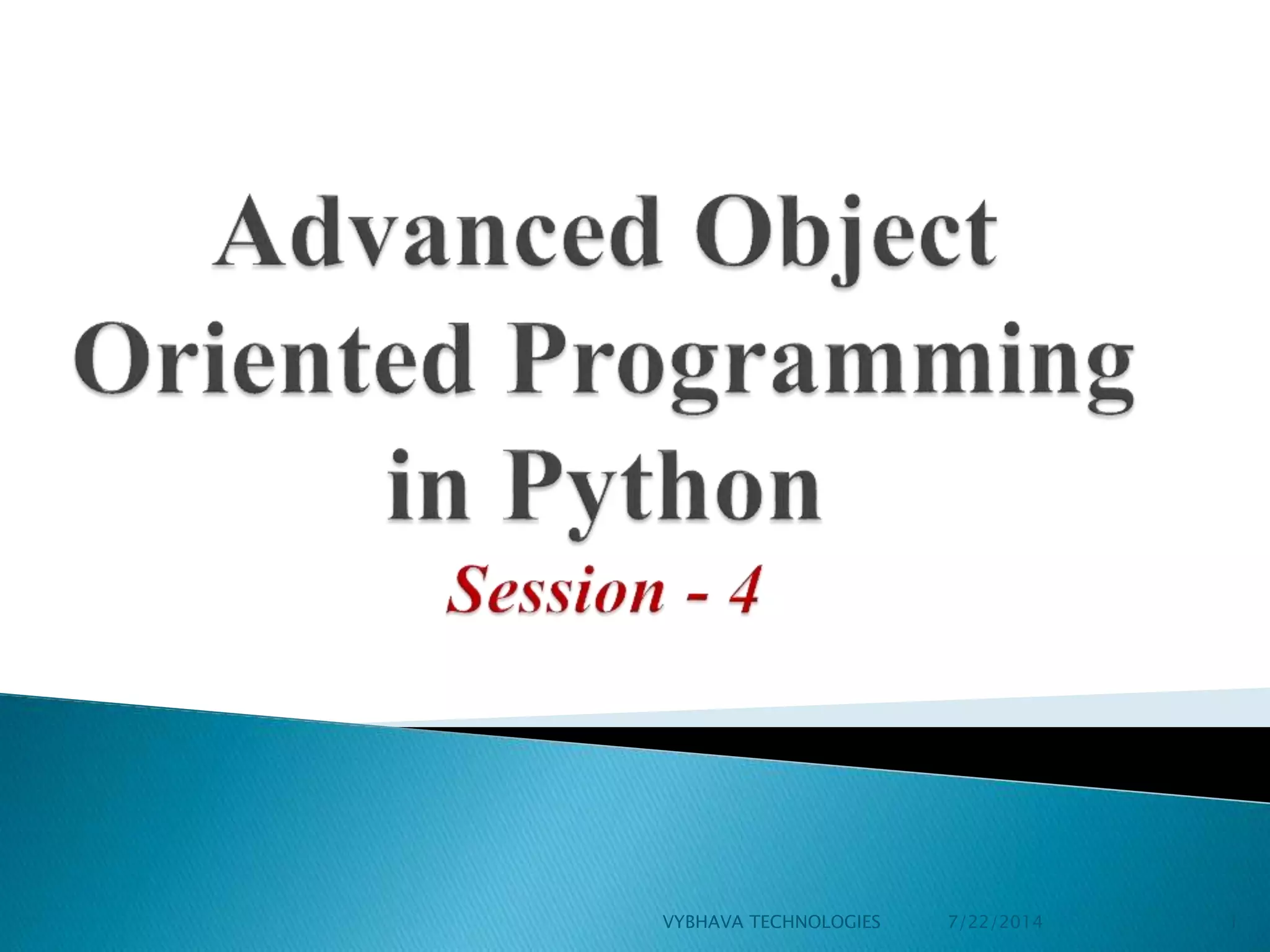
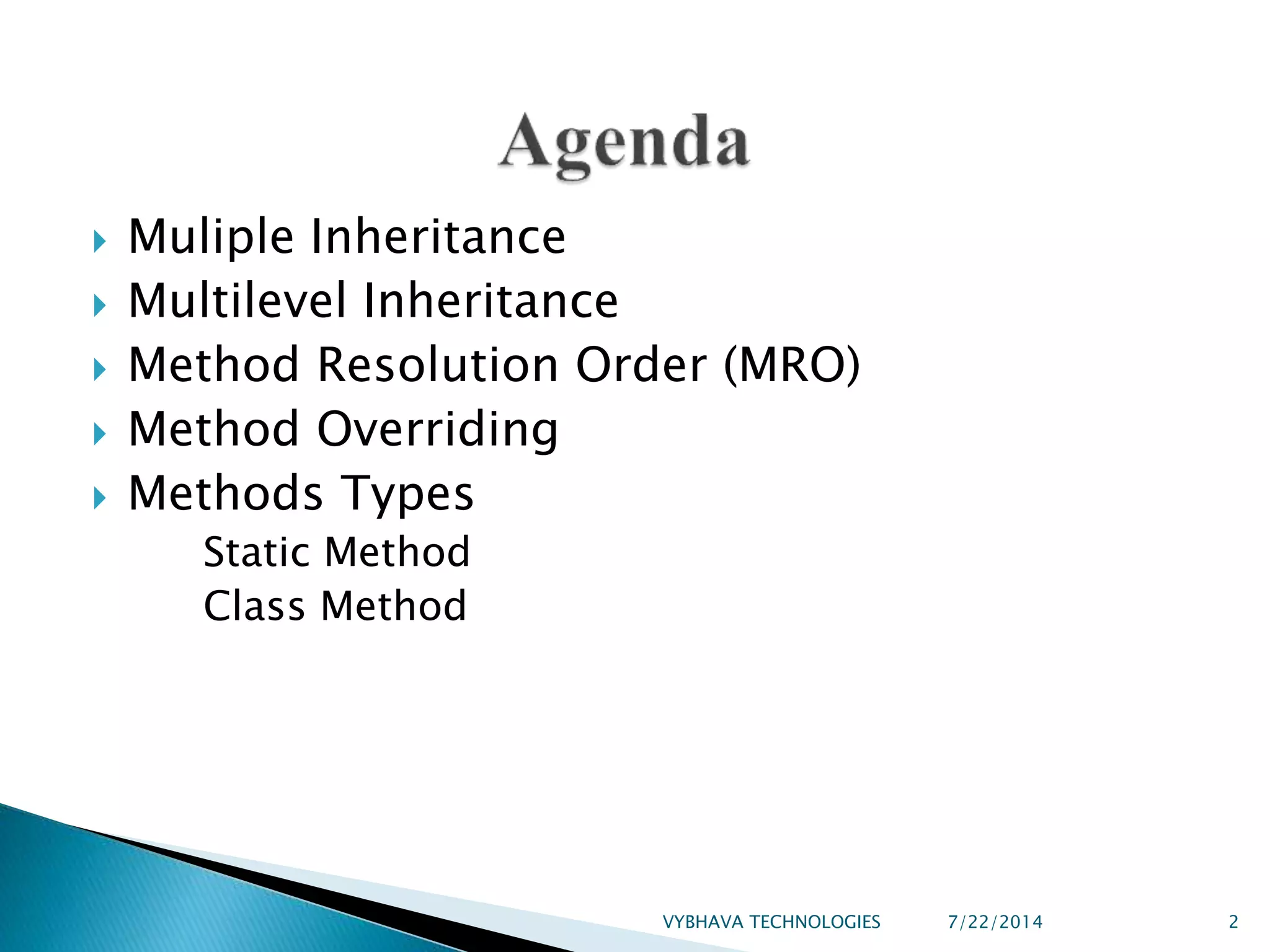
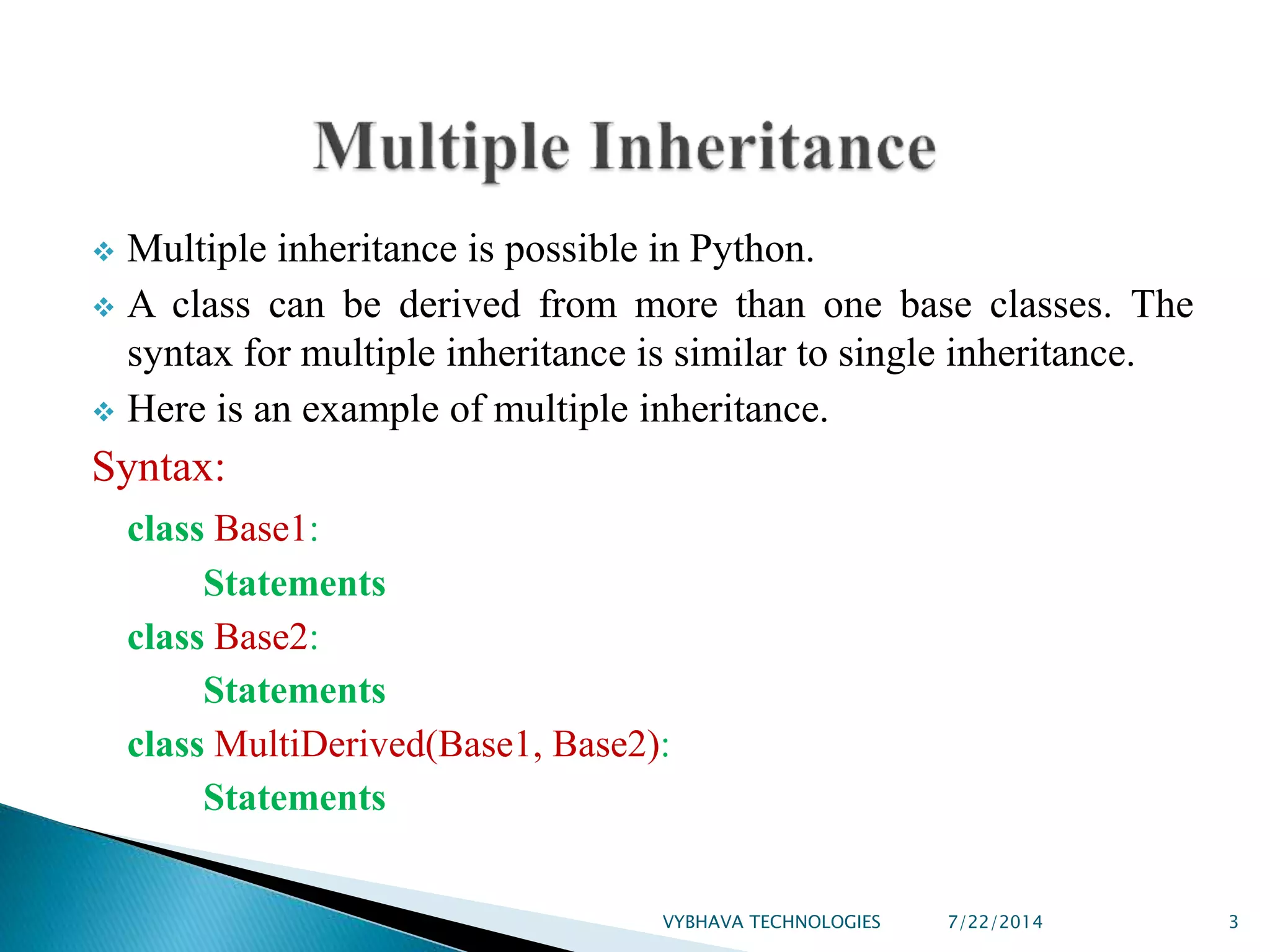
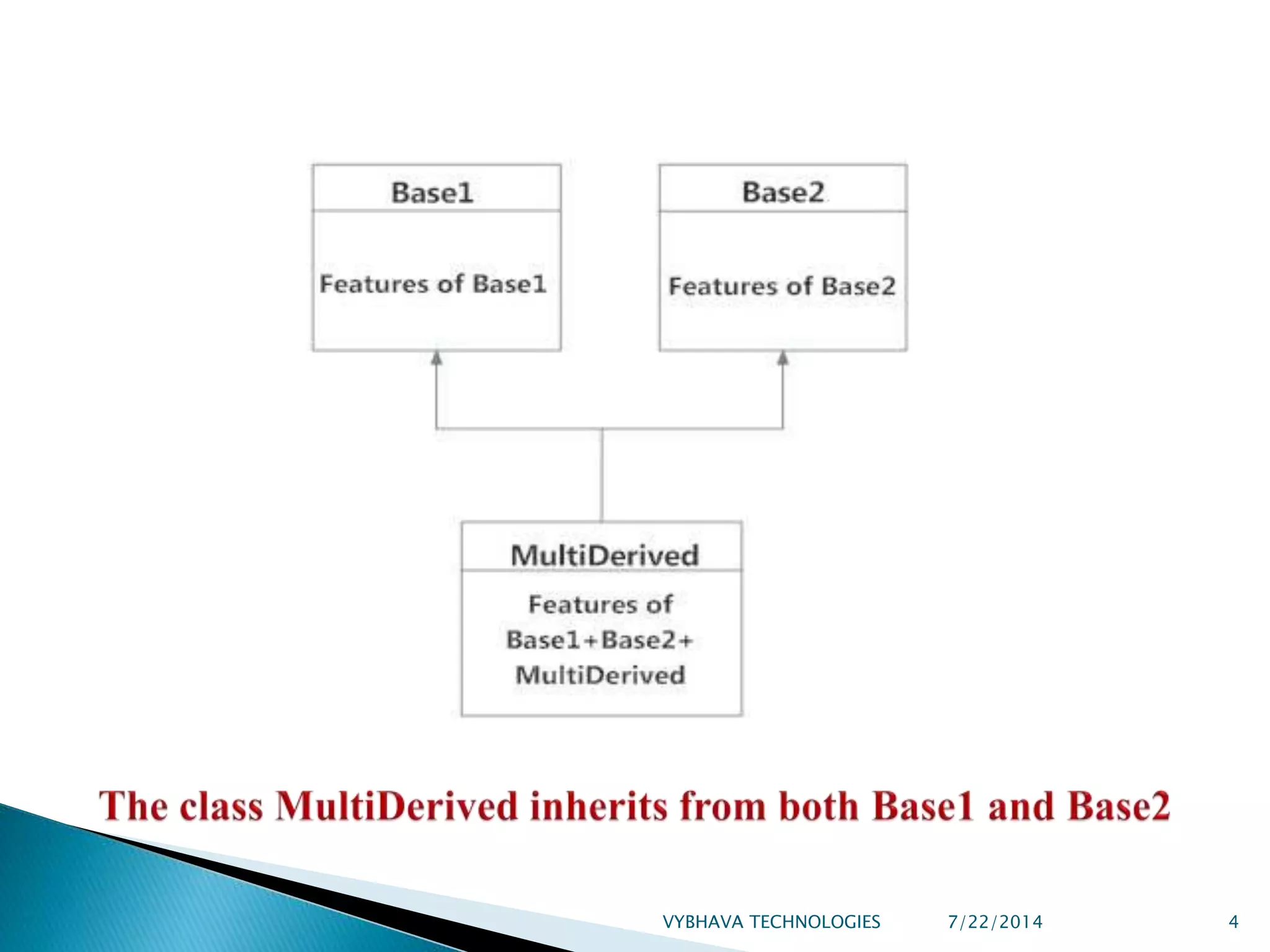
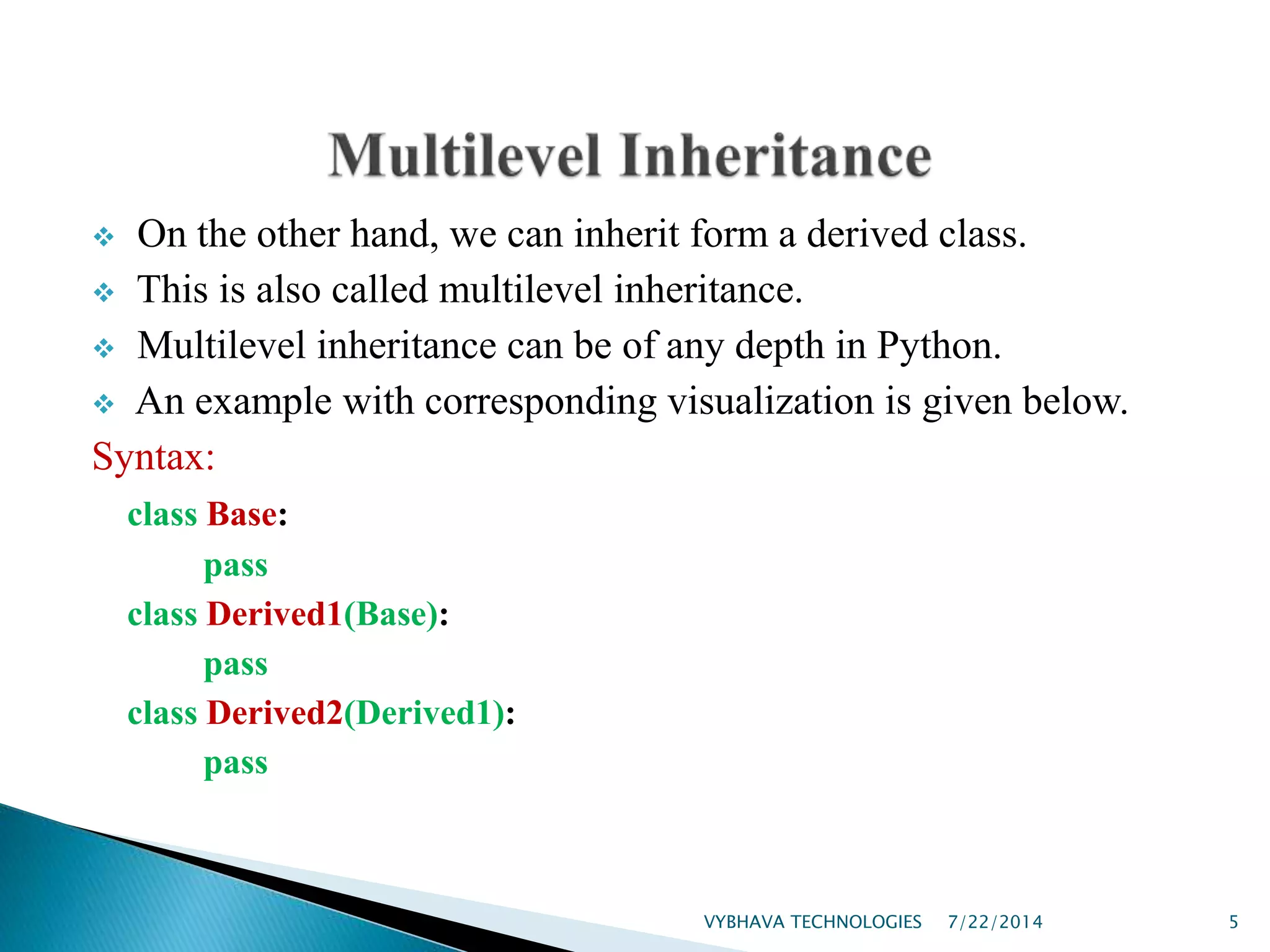
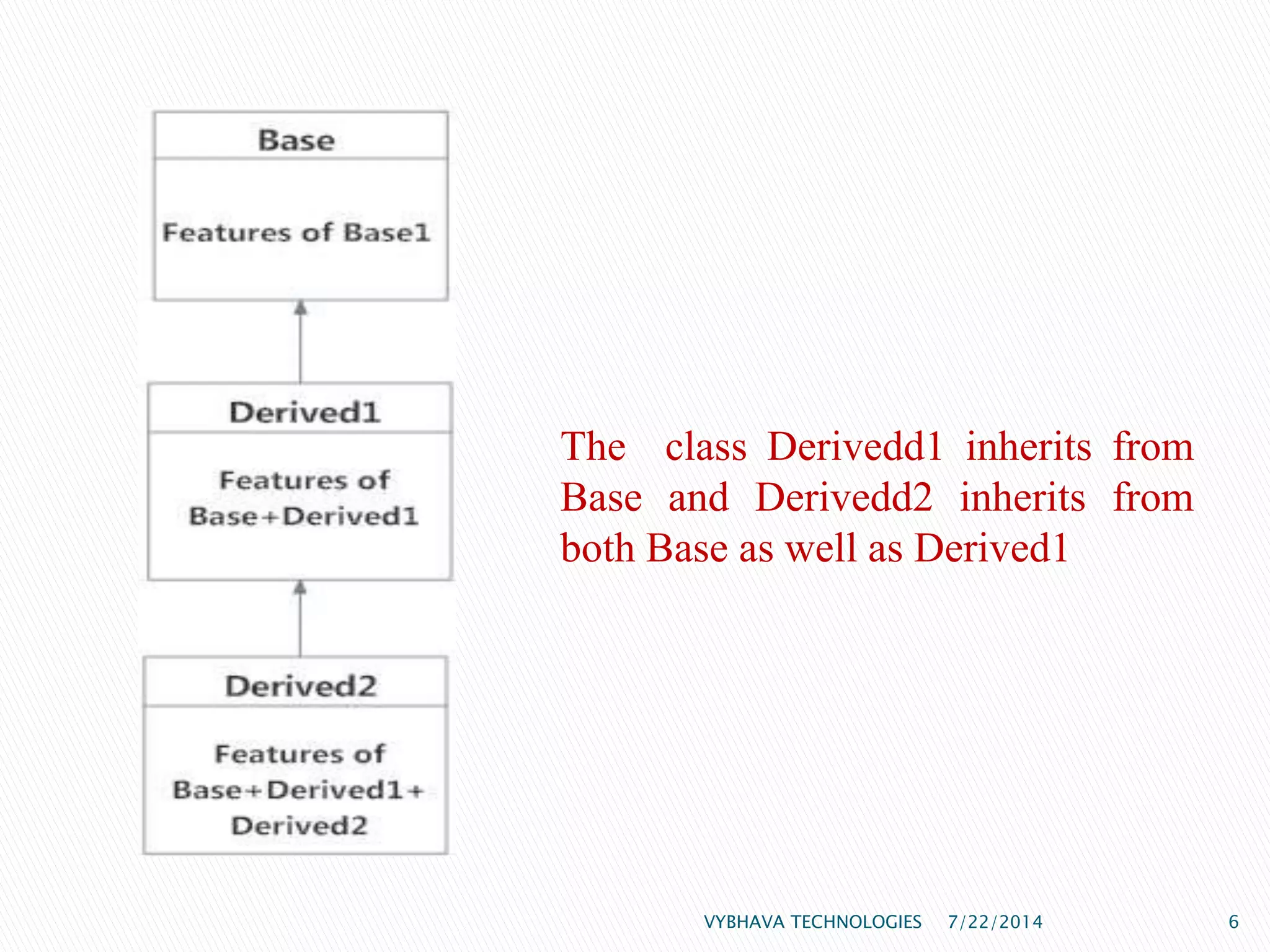
![ Every class in Python is derived from the class object.
In the multiple inheritance scenario, any specified attribute is
searched first in the current class. If not found, the search
continues into parent classes in depth-first, left-right fashion
without searching same class twice.
So, in the above example of MultiDerived class the search order
is [MultiDerived, Base1, Base2, object].
This order is also called linearization of MultiDerived class and
the set of rules used to find this order is called Method
Resolution Order (MRO)
continue…
7/22/2014VYBHAVA TECHNOLOGIES 7](https://image.slidesharecdn.com/advanceoopinpython-140722061245-phpapp01/75/Advance-OOP-concepts-in-Python-7-2048.jpg)
![…continue
MRO must prevent local precedence ordering and also provide
monotonicity.
It ensures that a class always appears before its parents and in case of
multiple parents, the order is same as tuple of base classes.
MRO of a class can be viewed as the __mro__ attribute
or mro() method. The former returns a tuple while latter returns a list
>>>MultiDerived.__mro__
(<class '__main__.MultiDerived'>,
<class '__main__.Base1'>,
<class '__main__.Base2'>,
<class 'object'>)
>>> MultiDerived.mro()
[<class '__main__.MultiDerived'>,
<class '__main__.Base1'>,
<class '__main__.Base2'>,
<class 'object'>]
7/22/2014VYBHAVA TECHNOLOGIES 8](https://image.slidesharecdn.com/advanceoopinpython-140722061245-phpapp01/75/Advance-OOP-concepts-in-Python-8-2048.jpg)
